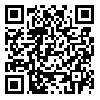BibTeX | RIS | EndNote | Medlars | ProCite | Reference Manager | RefWorks
Send citation to:
URL: http://jdisabilstud.org/article-1-864-en.html
2- PhD in Educational psychology, Shahid Rajaei Pardise of Farhangyan University of Qazvin, Iran
3- PhD in Guidance and Counseling, Kharazmi University, Tehran, Iran
Background & Objectives: Learning disability is one of the most common disorders among children and refers to the child's problems in obtaining skills like reading, writing, and mathematics compared to peers with the same intellectual ability. Disorder of written expression includes components such as spelling, handwriting, and writing. The most common component of writing disorder is poor spelling. The spelling skill (dictation) is the ability to substitute correct letters for sounds. Many children with a learning disability have difficulty linking sound and symbols or form associated with them. They cannot convert the sounds they hear into letters and words. In recent years, neuroscience has faced a new advancement called neurofeedback. Neurofeedback is a type of biofeedback that involves the central nervous system rather than the autonomous nervous system to examine the brain’s electrical activity. This tool is used to change the function of the brain by changing the brain wave pattern. It is very important to employ new methods in therapeutic and developmental interventions to help students with dictation disorder. Therefore, the present study aimed at introducing the neurofeedback treatment as an effective method for treating the disorder in male students in elementary school, 3rd grade.
Methods: The present study is an applied study in terms of objectives, with a single-subject AB design. In this regard, the baseline of the dependent variables was measured (Step A) during the multiple phases before the intervention, and then the intervention was applied (Step B). The statistical population of the study included all the students with the disorder of learning disabilities in the elementary schools, 3rd grade in the city of Abyek, during the Academic year September 2016 – June 2017. Five samples were selected by availability sampling in the center for learning disabilities. The data collection tools were: 1. Diagnostic interview based on the Diagnostic and Statistical Manual of Mental Disorders, Fifth Edition (DSM-5) with parents. 2. Wechsler Intelligence Test for children. 3. Research-made dictation test. 4. Neurofeedback system. The samples were selected according to the inclusion criteria: 1) Fulfilling the manual's diagnostic Criteria. 2) No drug consumption. 3) Studying in the 3rd grade, elementary education with 9 years old. 4) With an IQ of higher than 90 based on the IQ Wechsler scale. 5) Physical health. After that, their parents came to the school for therapeutic intervention and gave their informed consent in written form. In the next step, a diagnostic interview was conducted with the parents. Once the conditions have been met, an initial assessment was carried out (the baseline data were collected in 3 dictation sessions). One week after the baseline phase, the children participated in electroencephalography recordings. And, the treatment phase began with the pattern of brain waves (decrease in standard beta activity and increase in theta spectrum). The treatment protocol used was based on increasing beta waves and decreasing theta waves at the regions OZ and CZ. The sessions were held twice a week, including a 45-minute neurofeedback treatment and a 15-minute dictation test. The dictation test was taken every other two sessions, and there were 7 tests in total during the treatment phase that lasted 10 weeks. The method of visual analysis of charts was employed for the data analysis, and Cohen's d effect size (1998) was used to calculate the effect size. The method of visual analysis of charts was employed for the data analysis, and Cohen's d effect size (1998) was used to calculate the effect size.
Results: According to the data obtained, the changes or the Cohen’s d effect size (baseline - treatment) was -2.95, which indicated the significant effect of the neurofeedback treatment on the spelling disorder.
Conclusion: It can be concluded that neurofeedback is effective in regulating brain activity for treating dictation disorder in children. In the present study, the treatment protocol that focused on decreasing theta waves and increasing beta waves at the regions CZ and OZ resulted in the treatment of the disorder.
| Rights and permissions | |
 |
This work is licensed under a Creative Commons Attribution-NonCommercial 4.0 International License. |



